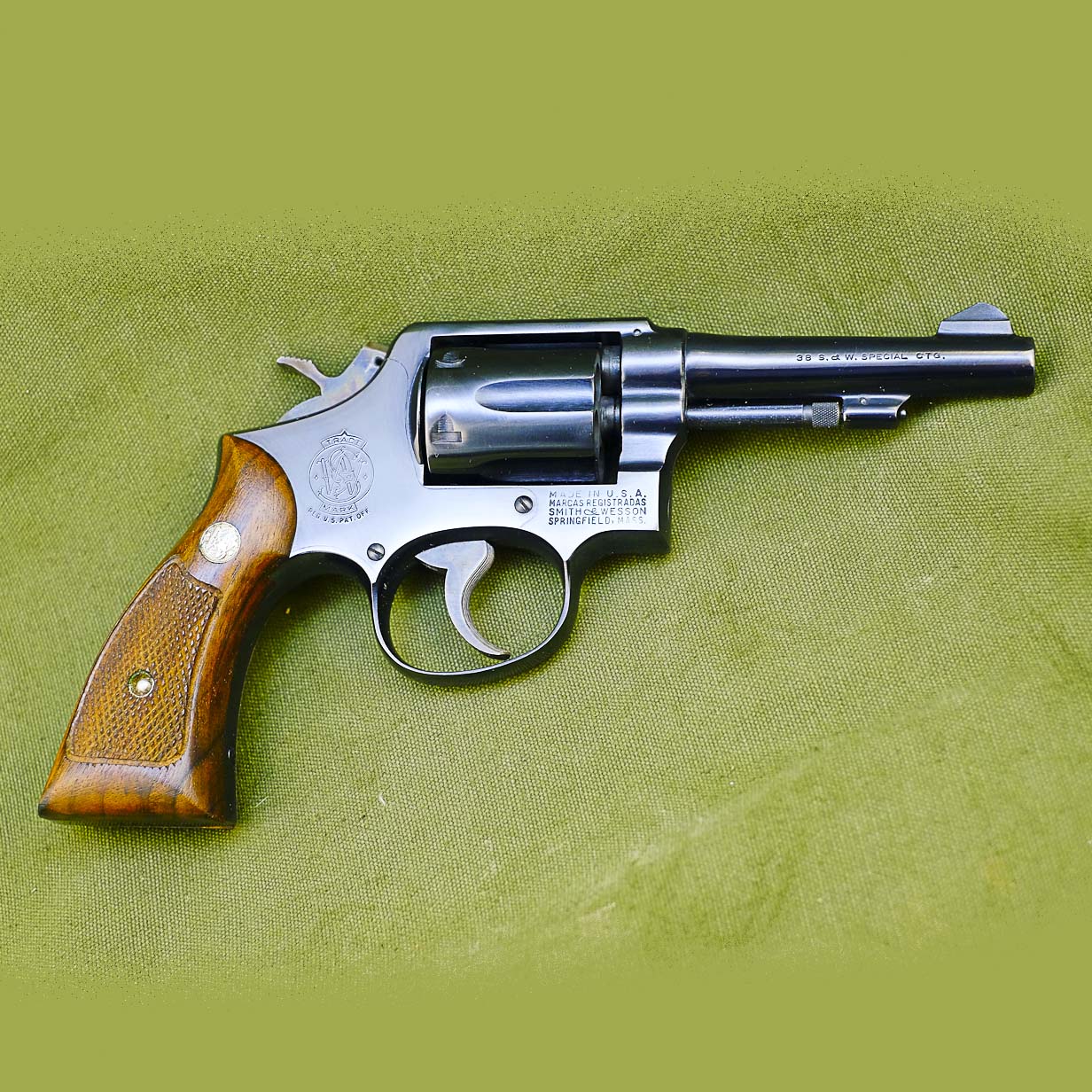

Pushing it forward releases the cylinder to the left. The current Model 14 features a redesigned cylinder release, which greatly aids in loading the gun. The trigger guard on the K models never change donning a winter glove, while tight for double action, works fine for single-action shooting. I can see some tweaking of the strain screw will be forthcoming. Out of the box, single-action pull was four pounds exactly, but the double action was a horrible 13 pounds.

In double action, it allows the trigger finger to naturally slide off the face of the trigger for a smooth, consistent pull. The trigger, on the other hand, is between a target and service width, smooth to the touch and color case-hardened for durability. Similar to past models, the hammer is target width (.510 inch) and checkered. The top of the frame has been bead blasted to reduce glare, and the top rib on the barrel is serrated for the same reason. The rear sight notch is highly defined with no white outline, and the Patridge front sight settles into it with ample room on either side. double actionįully adjustable rear sights are standard and are removable if you wish to add optical sights. I was fortunate to have both models shipped to me, but since I gravitate to nickel-finished revolvers, I thought I would give this one the workout.Ĥ lb. It's available in either blue or nickel finish, albeit only with a six-inch barrel. Smith & Wesson recently returned the Model 14 to the fold.

In production for more than three decades, the revolver was discontinued in 1982. In 1957, to simplify all model numbers, the K-14 was changed to the Model 14. From here, it went on to be the K-38 Masterpiece (1947), and because it was a favorite of target shooters, the company offered guns that weighed 38½ ounces for target matches as the models K-22 and K-32.


 0 kommentar(er)
0 kommentar(er)
